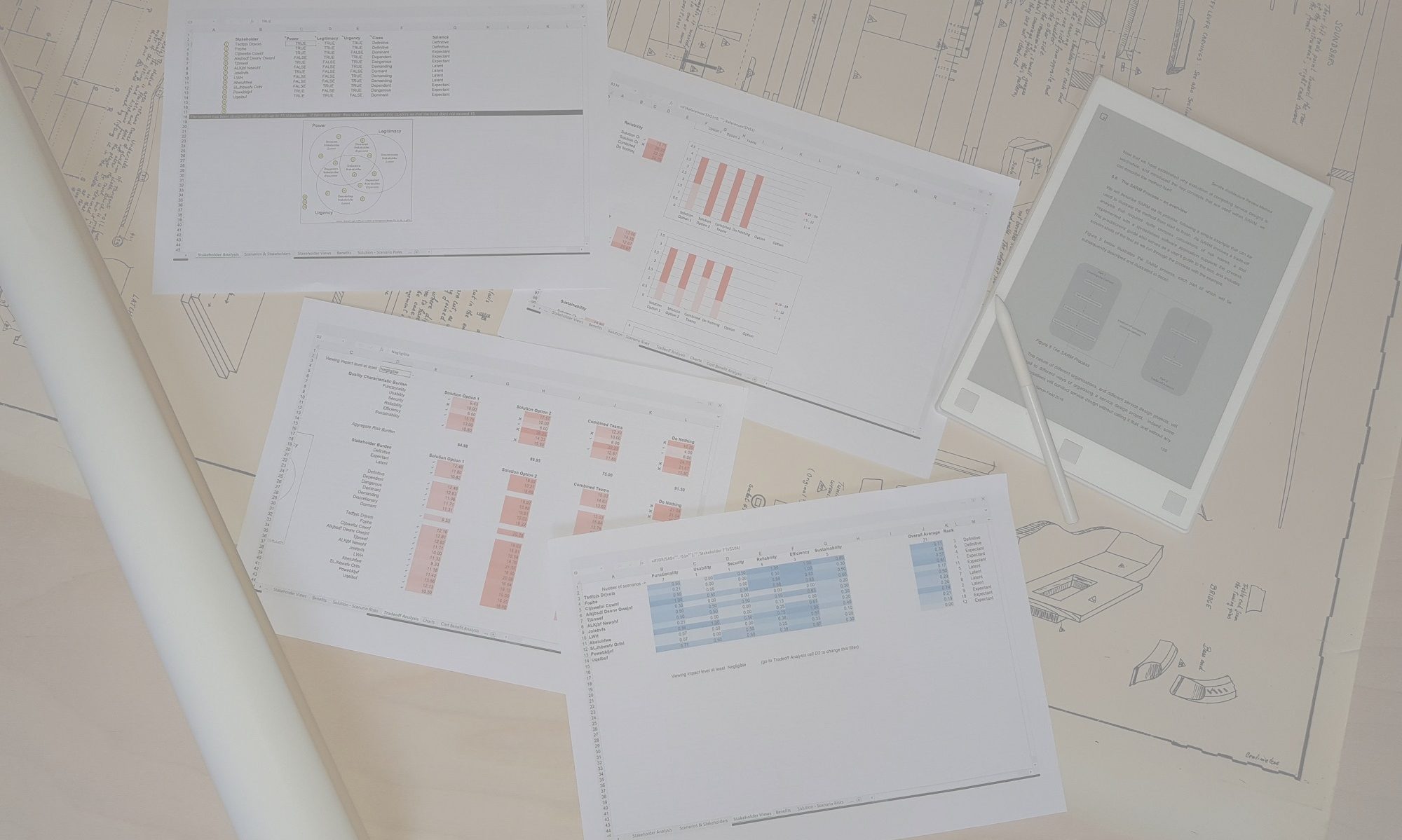This activity should be conducted very early in the project. It is good project practice for project leaders to articulate and understand their stakeholders. The activity can be accomplished in a fairly short meeting (up to an hour) between the project sponsor and lead architect / designer. Start with a whiteboard and brainstorm all stakeholders or stakeholder groups that you can think of. It might help to divide this between internal stakeholders (those within your organisation) and external ones. A widely accepted definition of a stakeholder is:
Any group of individual who can affect or is affected by the project or solution.
Adapted from R. Edward Freeman, “Strategic Management”, 1982
The SARM tool is limited to a maximum of 15 stakeholders or stakeholder groups. So if the initial brainstorm identifies more, you then need to cluster these into groups of stakeholders that will take a similar view of / attitude towards, the proposed system or service. Once you have 15 or fewer stakeholders, you now need to answer three questions for each one:
Do they have power? (i.e. can they make the project do something it would otherwise not have done?)
Do they have legitimacy? (are they on the same page as the project team, or do they have ‘their own agenda’?)
Do they have urgency? (are they really keen to see this new solution, or do they not really care?)
 This now allows you to classify each stakeholder into one of seven classes. These were devised by Ronald K. Mitchell, Bradley R. Agle and Donna J. Wood, and first published in the Academy of Management Review, Volume 2, Issue No. 4 in 1997 in a paper entitled “Toward a theory of stakeholder identification and salience: defining the principle of who and what really counts”.
This now allows you to classify each stakeholder into one of seven classes. These were devised by Ronald K. Mitchell, Bradley R. Agle and Donna J. Wood, and first published in the Academy of Management Review, Volume 2, Issue No. 4 in 1997 in a paper entitled “Toward a theory of stakeholder identification and salience: defining the principle of who and what really counts”.
The SARM spreadsheet tool allows you to do this classification automatically, just by entering the name of each stakeholder and answering the three questions. It also provides you with a graphic so that you can drag the numbered disc that corresponds to each stakeholder into the appropriate segment of this diagram.
You might find this information sheet to be of use in helping all participants in this activity have a common understanding of stakeholder analysis.

